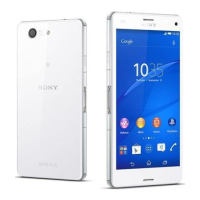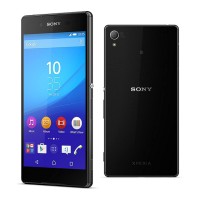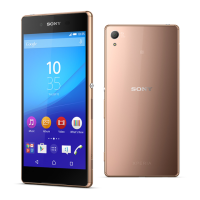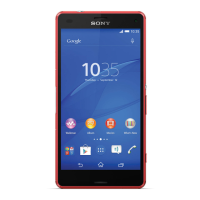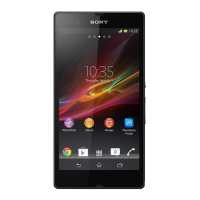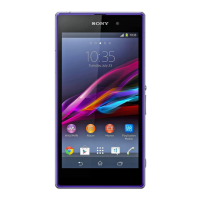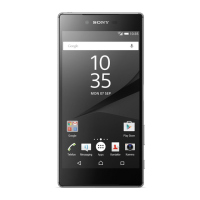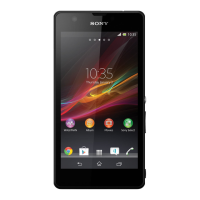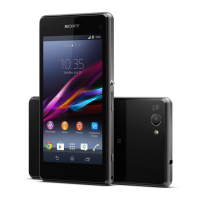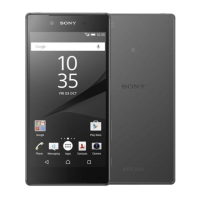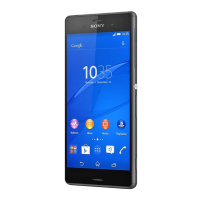
Do you have a question about the Sony Xperia Z3 D6603 and is the answer not in the manual?
| Display Type | IPS LCD |
|---|---|
| Display Size | 5.2 inches |
| Resolution | 1080 x 1920 pixels |
| Operating System | Android 4.4.4 (KitKat), upgradable to 6.0 (Marshmallow) |
| Chipset | Qualcomm MSM8974AC Snapdragon 801 |
| CPU | Quad-core 2.5 GHz Krait 400 |
| GPU | Adreno 330 |
| RAM | 3 GB |
| Internal Storage | 16 GB |
| Main Camera | 20.7 MP |
| Main Camera Features | LED flash, HDR, panorama |
| Main Camera Video | 4K@30fps, 1080p@60fps, 720p@120fps, HDR |
| Front Camera | 2.2 MP |
| Front Camera Video | 1080p@30fps |
| Dimensions | 146 x 72 x 7.3 mm |
| Weight | 152 g |
| Build | Glass front (Gorilla Glass 3), glass back (Gorilla Glass 3), aluminum frame |
| SIM | Nano-SIM |
| IP Certification | IP68 dust/water resistant (up to 1.5m for 30 mins) |
| Protection | Corning Gorilla Glass 3 |
| Loudspeaker | Yes, with stereo speakers |
| 3.5mm Jack | Yes |
| WLAN | Wi-Fi 802.11 a/b/g/n/ac, dual-band, Wi-Fi Direct, DLNA, hotspot |
| Bluetooth | 4.0, A2DP, aptX |
| GPS | Yes, with A-GPS, GLONASS |
| NFC | Yes |
| Radio | FM radio, RDS |
| Sensors | Accelerometer, gyro, proximity, compass, barometer |
| Network | GSM / HSPA / LTE |
| Colors | Black, White, Copper, Silver Green |
| Memory Card Slot | microSDXC |
| Battery | Non-removable Li-Ion 3100 mAh |
| USB | microUSB 2.0 (MHL TV-out), USB On-The-Go |
Provides information about the user guide and software version.
Identifies device components and their functions.
Instructions for inserting SIM and memory cards.
Guide to initial device setup and configuration.
Explains benefits and requirements of a Google account.
How to connect and charge the device's battery.
Explanation of user account types and management.
Details on touch gestures like tapping and holding.
How to activate and deactivate the screen lock.
Overview of the home screen and its panes.
Navigating and managing installed applications.
How to switch between and manage open apps.
Using miniature apps for multitasking.
Adding and managing widgets on the home screen.
Organizing apps using shortcuts and folders.
Customizing the home screen appearance.
Capturing still images of the device screen.
Capturing video of the device screen activity.
Managing and viewing alerts and system messages.
Explains the meaning of status bar icons.
Lists and briefly describes available applications.
Steps to download apps from the Google Play Store.
Instructions for installing apps from non-Google sources.
Using the Google Chrome browser for web access.
Configuring network settings for internet and MMS.
Connecting to and managing Wi-Fi networks.
How to share device internet via USB, Bluetooth, or hotspot.
Monitoring and managing mobile data consumption.
Manual and automatic selection of mobile network modes.
Setting up and connecting to VPNs for secure access.
Syncing contacts, email, and calendar with online services.
Setting up corporate email and data sync.
Syncing device data with Outlook via PC Companion/Sony Bridge.
View and change device settings via the Settings menu.
Adjusting audio levels for calls, notifications, and media.
Configuring interruption and alert settings.
Setting up and managing PIN for SIM card security.
Adjusting display brightness and other screen properties.
Selecting device language and text input language.
Manually setting the device's date and time.
Using the virtual keyboard for text input.
Using voice commands to type text.
Selecting, cutting, copying, and pasting text.
Customizing keyboard layout, languages, and suggestions.
Methods for initiating phone calls.
Handling incoming calls.
Managing voice messages.
Making emergency calls.
Methods to transfer contacts to the device.
Finding and reviewing contact information.
Creating and modifying contact entries.
Organizing contacts for quick access.
Sharing contact details.
Managing text and multimedia messages.
Deleting, starring, and searching messages.
Configuring message notification and delivery settings.
Using Hangouts for real-time communication.
Configuring email accounts for sending/receiving.
Managing email inbox and messages.
Managing account settings and auto-replies.
Using the Gmail application for email.
Methods to get music files onto the device.
Using the Music app to play audio.
Navigating the music library and playlists.
Creating and managing custom music playlists.
Sharing music tracks via various applications.
Adjusting audio settings like Equaliser and Surround sound.
Applying visual effects to music playback.
Identifying songs using the TrackID service.
Using the device's built-in FM radio.
Saving and listening to preferred radio stations.
Adjusting mono/stereo sound and radio region.
Basic camera operations for photos and videos.
Automatically focusing on detected faces.
Automatically taking photos when a smile is detected.
Enabling geotagging to tag photos with location.
Overview of various camera settings.
Description of different shooting modes.
Settings for video recording.
Adjusting video quality and frame rate.
Using the self-timer for photos and videos.
Using Smile Shutter for video recording.
Controlling the camera's focus area.
Recording videos with High Dynamic Range.
Adjusting exposure based on lighting conditions.
Stabilizing video recordings.
Selecting microphone settings for videos.
Choosing video preview options after shooting.
Using the flash for video recording.
Quickly setting camera for common video situations.
Browsing and viewing media files in the Album app.
Sharing, editing, and organizing media files.
Grouping photos based on recognized faces.
Applying edits and effects to photos.
Making media files invisible in the main Album view.
Navigating the Album application's main menu.
Viewing geotagged photos on a map interface.
Playing movies and video content.
Getting movie info, clearing data, and deleting videos.
Automatically creating short videos from photos and clips.
Accessing movies and TV shows via Sony service.
Displaying device screen on TV via MHL or HDMI.
Using Screen mirroring via Wi-Fi Direct.
Sharing media content across DLNA devices.
Accessing media from other DLNA devices.
Connecting game controllers and accessories.
Using Near Field Communication for data sharing.
Sending files and connecting accessories via Bluetooth.
Automating setup for wireless features via NFC.
Managing accessories and automating actions.
Connecting with health and fitness devices.
Making payments using NFC.
Enabling and managing device location services.
Tips for optimizing GPS performance.
Using maps for location tracking and directions.
Activating data roaming for internet access abroad.
Connecting to car systems via MirrorLink.
Disabling network radios for flights.
Managing schedules and appointments.
Creating and configuring a new alarm.
Setting alarms to repeat on specific days.
Accessing help, troubleshooting, and software updates.
Using PC Companion/Sony Bridge for device management.
Installing software updates wirelessly or via computer.
Using my Xperia service to locate and secure a lost device.
Locating the device's IMEI number.
Managing battery consumption and power saving modes.
Understanding and managing device memory.
Creating and restoring data backups.
Performing hardware and software diagnostic tests.
Restarting the device when unresponsive.
Manually powering off the device.
Restoring the device to its original settings.
Guidelines for device usage in adverse environments.
Information on environmentally responsible disposal.
Notes on regional and network-specific feature availability.
Publisher's warranty and legal disclaimers.

